Shapes & Measurements ESL Activities, Games & Worksheets
Mastering Measurements

ESL Measurements Worksheet - Vocabulary Exercises: Matching, Word Search, Categorising - Speaking Activity: Asking and Answering Questions - Pair Work
In this useful measurements worksheet, students learn and practice measurement words and abbreviations. First, students match four measurement...
Measurement Mania
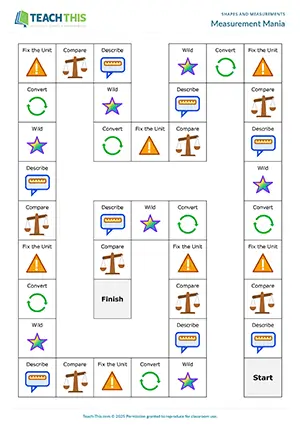
ESL Measurements Board Game - Speaking: Forming Sentences, Answering Questions, Freer Practice - Group Work
This fun measurements board game helps students practice using measurement vocabulary, selecting appropriate units, and making simple unit conversions. In groups, players take turns...
Shapes and Measurements Quiz
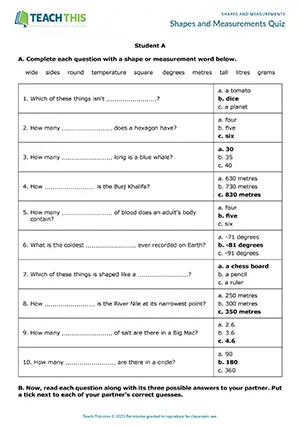
ESL Shapes and Measurements Activity - Vocabulary: Gap-fill, Asking Questions, Guessing - Group and Pair Work
This free shapes and measurements quiz helps students practice vocabulary associated with different measurements and shapes. In two groups, students begin by completing trivia questions with shape...
Classroom Measure Masters
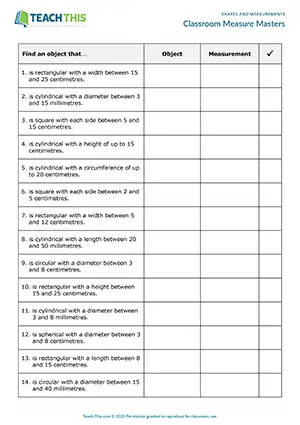
ESL Shapes and Measurements Game - Vocabulary: Taking and Recording Measurements, Form Completion - Pair Work
This engaging shapes and measurements game helps students practice shape and measurement vocabulary by locating and measuring classroom objects with a ruler and tape measure. In pairs, students...
Measure Up or Shape Up!

ESL Shapes and Measurements Game - Vocabulary and Speaking: Answering Questions, Performing Tasks, Freer Practice - Group Work
In this engaging shapes and measurements game, students practice shape and measurement vocabulary through guessing, defining, drawing, measuring...
The Measure of Things
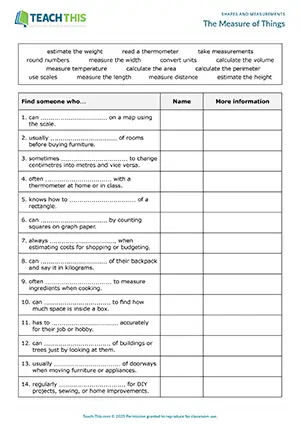
ESL Shapes and Measurements Activity - Vocabulary and Speaking: Gap-fill, Asking and Answering Questions, Controlled Freer Practice
In this shapes and measurements speaking activity, students ask and answer questions that use common measurement collocations. First, students complete 'Find...
Measure Matters
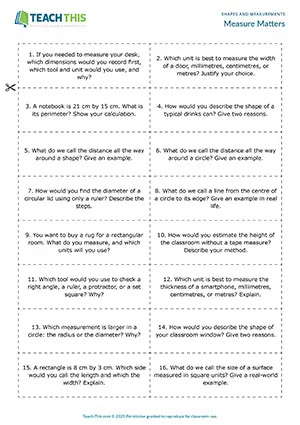
ESL Shapes and Measurements Activity - Vocabulary and Speaking: Asking and Answering Questions, Discussion, Freer and Communicative Practice - Group Work
In this shapes and measurements discussion activity, students practice or review vocabulary for shapes and measurements by discussing questions, choosing...

